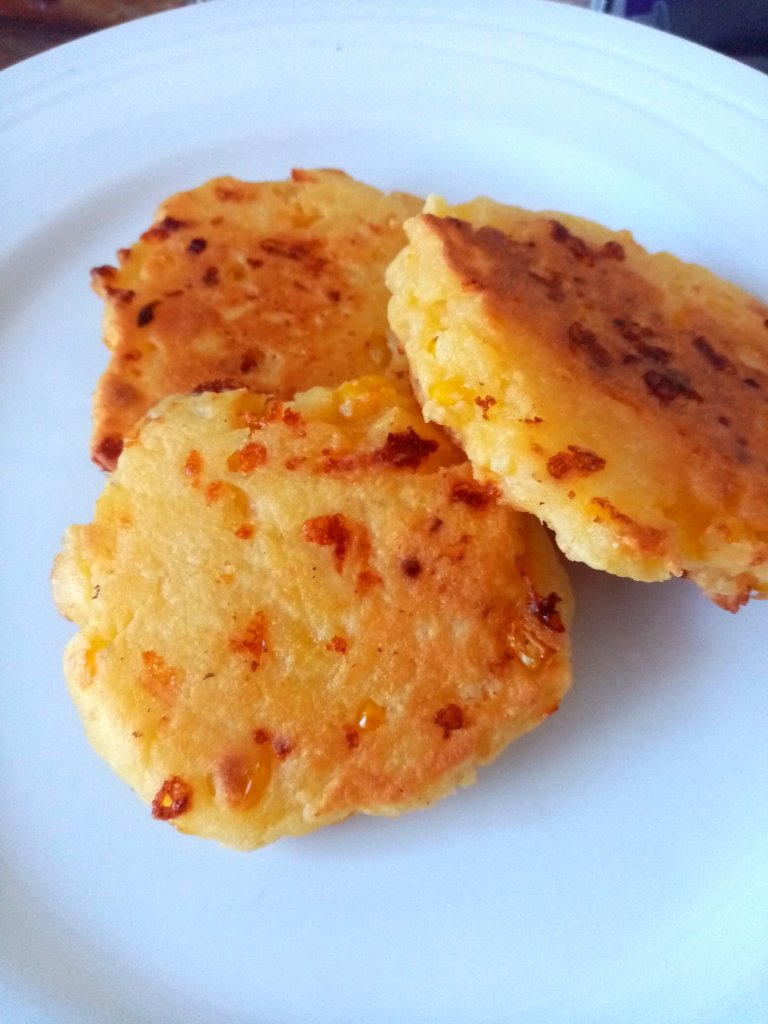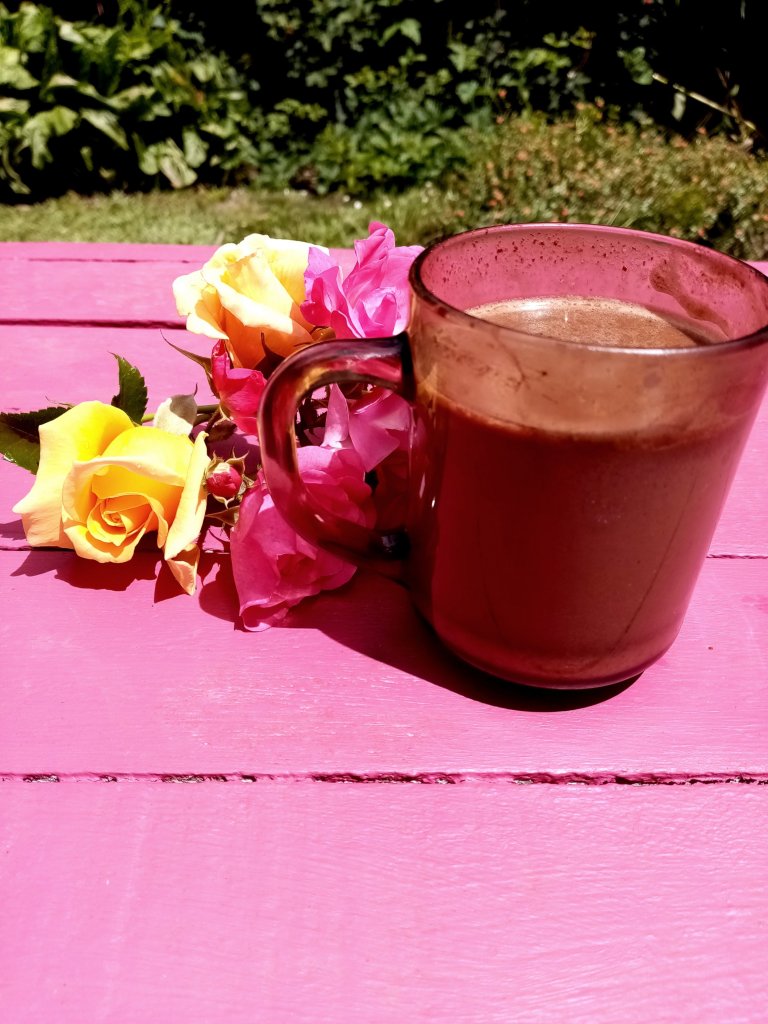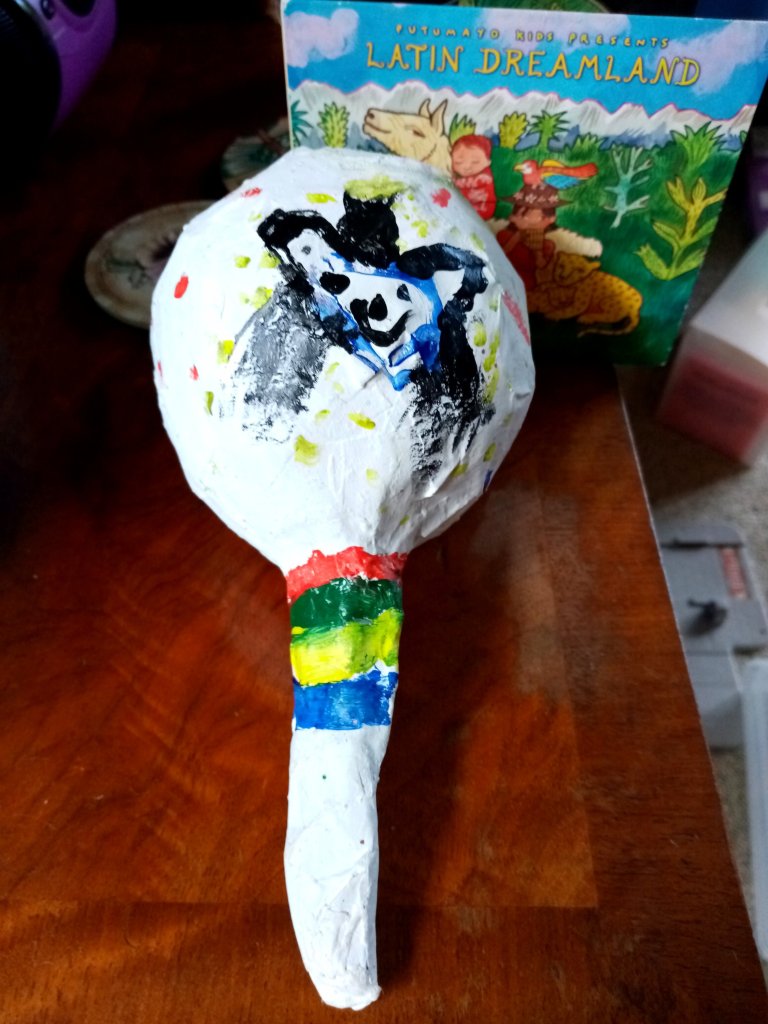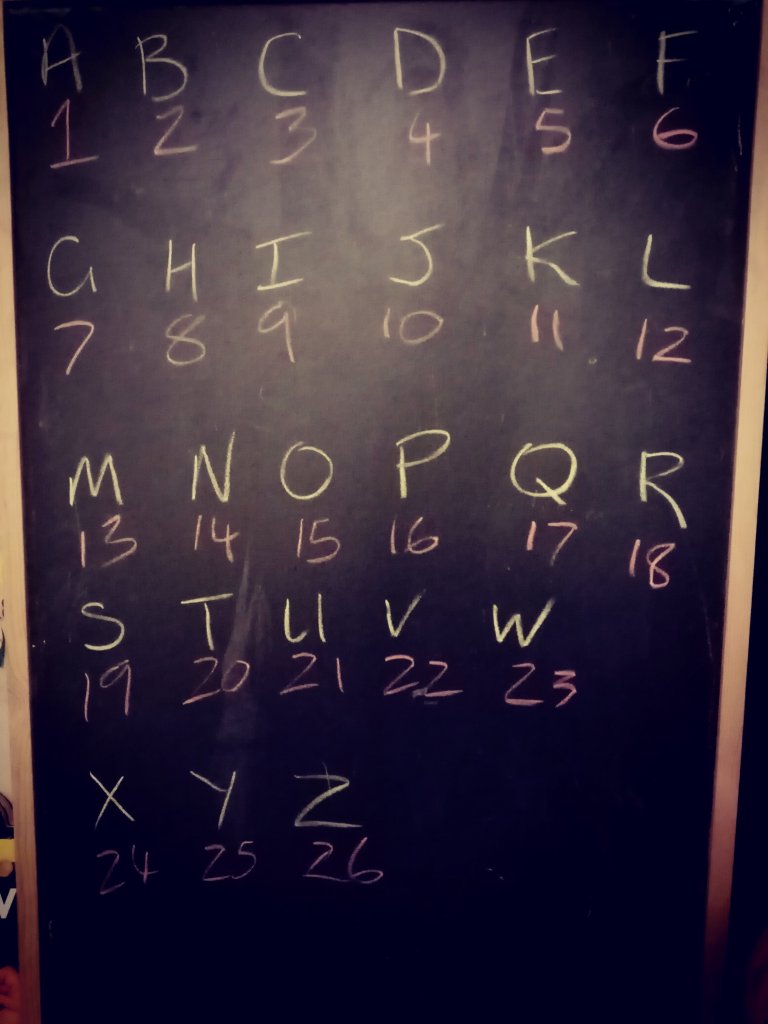
What is in the Colombia crate?
You begin by opening your travel mail from Milo and Anya to find out about their latest travel adventures! Miss 6 enjoys seeing all the photos in Colombia.
There is a passport sticker to add to our Adventure Passport and various cards about Colombia to add to it as well. These range from a country map and cultural information, to activity cards with things to do. The game in the box is inspired by Tejo – we agreed that playing tejo in Colombia looks like a lot of fun! We learned about the Wayúu weavers and were able to hand paint our own mochila bag. Check out our adventures at home: we were inspired to cook corn arepas, make decadent cheesy hot chocolate, and make a maraca. We really enjoyed going online to learn more about the mud baths of El Totumo, the beautiful colours of Caño Cristales, and watching great green macaw be born and learn to take flight.
Our Deluxe Box Book was the graphic novel ‘Juana & Lucas’ by Juana Medina which we very much enjoyed. We liked getting a glimpse into her life in Colombia and had fun learning a few words in Spanish.
HOW DO I ORDER ATLAS CRATE?
This is not a paid review. I spent a lot of time searching the internet to find out more information about the Kiwi Crate and Atlas Crate boxes before deciding to try them and found the blog posts / photos that people shared were really useful!
If you would like to try Atlas Crate (or one of their other lines), you can receive 50% off your first box by clicking here.
What I like about the Atlas Crate kits is that they provide a colourful and imaginative way of exploring the world through hands-on activities. I like that they use a mix of STEM and art to explore different concepts and ideas. Their products are also very well made, with clear instructions, and kids feel a real sense of pride in what they accomplish with each box.
There’s no obligation to sign-up in an on-going capacity so it’s easy to tie them in with birthdays / Christmas; the boxes are quite compact so they also store easily in a cupboard for bringing them out on a rainy day. Other families will choose to sign up for a longer period (like a 3, 6, or 12 month cycle).
WHAT IS IN AN ATLAS CRATE?
Each Atlas Crate comes with a special airmail envelope from Anya the Cricket and Milo the Sandpiper revealing where they’ve been on their latest adventure. There is a special passport sticker for your child’s Atlas Adventure Book plus seven new pages to add about a new country (highlighting geography, customs, landmarks, history, and foods).
There are supplies for two activities (which might be a mix of art, STEM, and games) as well as suggestions for more DIY activities to try at home – from things to make, to things to bake!
If you choose the Deluxe option, then you will also receive a book that helps you explore that month’s destination. This upgrade is an additional USD$9.95 (approx. $15 NZD) and can impact shipping costs as well. Since we’re homeschooling, I decided that we’d try the Deluxe option for 6 months to see how useful we find it.
Interested in more homeschool box reviews?
Discover the World with ATLAS Crate
Explore STEM with Kiwi Crate
#2 The Amazing Animation Box (make your own 19th century movie with a Zoetrope!)
#3 The Mechanical Sweeper Box (make your own baleen whale!)
#4 The Disc Launchers Box (play games with physics!)
#5 Kaleidoscope Puzzles (explore symmetry and mirrors!)
ExperisenseNZ






